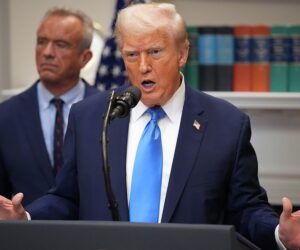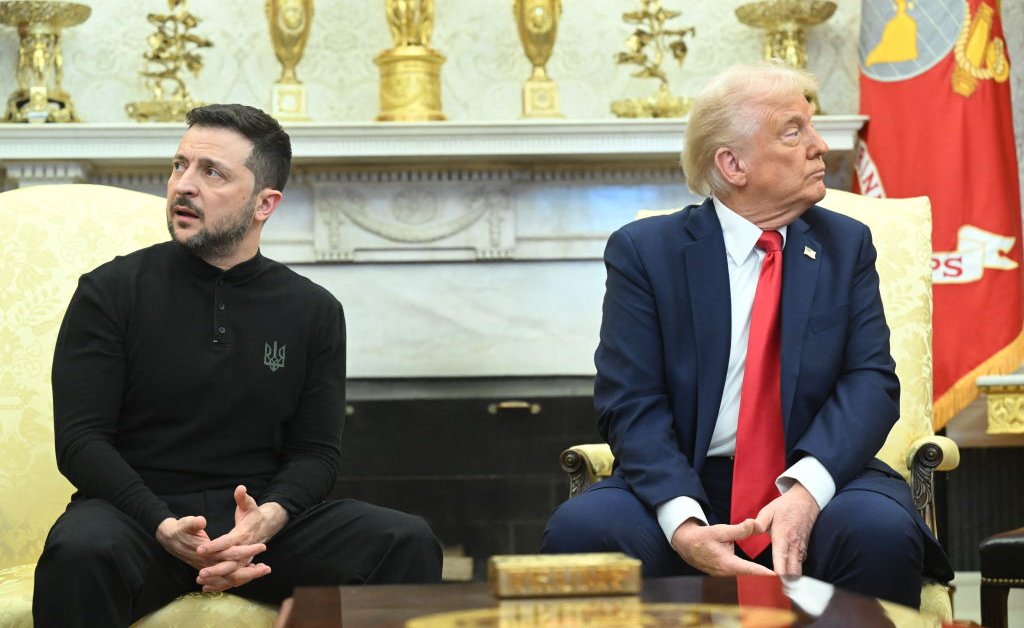South Korea’s military has started to dismantle the loudspeakers that blare anti-North Korean broadcasts along the country’s border. The action is Seoul’s latest diplomatic gesture to its long-time rival neighbor.
“This is a practical measure aimed at helping ease tensions with the North without compromising the military’s state of readiness,” South Korea’s Defense Ministry said via an X post originally published in Korean on Monday.
Relations between the two Koreas were at an all time low in years under South Korea’s former President Yoon Suk Yeol, who was impeached over his martial law declaration last December, as the two sides engaged in tit-for-tat psychological warfare campaigns.
After a yearslong pause, South Korea resumed its “Voice of Freedom” border loudspeaker broadcasts of K-pop hits from the likes of supergroup BTS, as well as world news, weather reports, and anti-North Korean messages, in June last year. This was done in response to the North launching trash-filled balloons over the South. The North’s balloon attack was itself in retaliation for activists in the South launching balloons filled with propaganda leaflets calling North Korean leader Kim Jong Un “a bloodthirsty dictator” towards Pyongyang.
Where Yoon believed in an aggressive, confrontational approach to the North, South Korea’s newly-elected President Lee Jae-myung wants to ease tensions between the two sides. Lee promised in his inaugural address at the National Assembly on June 4 to restart talks and open a communication channel with the North in order to “establish peace on the Korean Peninsula through talks and cooperation.”
Read More: South Korea’s Impeachment Saga Ends. But Its Troubles Are Far From Over
North and South Korea have technically been at war since 1950. An armistice in 1953 paused fighting, but did not formally bring an end to the war. (South Korea did not sign the armistice.)
Here’s a look at where relations currently stand.
Latest gesture of conciliation
The dismantlement of the loudspeakers, which is due to be completed by the end of this week, is the latest conciliatory gesture by the South. In June, the South Korean government announced that it had suspended all of the loudspeaker broadcasts. South Korea’s Ministry of Unification is also reportedly considering permitting individual tours to North Korea in an attempt to improve relations.
Since June, Lee’s government has moved to discourage activist groups in the South from carrying out their leaflet campaigns including indicating a possible ban on any attempts via laws on aviation and public safety. The moves have angered some activists who argue that they undermine efforts to transmit information to the North.
“This is a proactive, long-term step by the South to create a friendly atmosphere ahead of any possible resumption of dialogue,” Yang Moo-jin, president of the University of North Korean Studies, told the South China Morning Post.
Read More: Lee Jae-myung Aims to Steer South Korea Past Its Moment of Crisis and Mounting Challenges
North Korea’s seemingly lukewarm reaction
North Korean officials have not yet responded to the South’s gesture, nor has any apparent move been made to take down or halt its own loudspeakers, which broadcast discomforting noises across the border that have been known to resemble grinding metal, loud gongs, and howling wolves. Colonel Lee Sung-jun, a spokesperson for South Korea’s Joint Chiefs of Staff, told South Korean news outlet Yonhap News Agency that the South has not observed any indication of the North removing its own loudspeakers so far.
Overall, the North has thus far rebuffed the South’s peace gestures.
“If the ROK [Republic of Korea], which had stoked the atmosphere of extreme confrontation in the past … expected that it could reverse all the results [of its actions] with a few sentimental words, nothing is [a] more serious miscalculation,” said Kim Jong Un’s sister Kim Yo Jong in late July.
Earlier this year, the North also banned performances of the song “Bangapseumnida” (“Glad to meet You”), which is widely seen as a symbol of reconciliation. And last year, the North revised its Constitution to reclassify the South as a “hostile state” and the country’s “principal enemy.” Information channels to the North run by Radio Free Asia and Voice of America have also been hamstrung by U.S. President Donald Trump’s aid funding cuts.
The North has steadily moved closer to Russia, which has exacerbated already strained diplomatic efforts between Pyongyang and Washington and between Moscow and Seoul. North Korea signed a security partnership with Russia last year, opened regular direct flights between Moscow and Pyongyang in July, and has repeatedly affirmed its “unconditional support” of Russia’s actions in its war with Ukraine. The North has reportedly sent up to 30,000 North Korean troops and millions of artillery shells to support Russia on the frontlines of the war, according to Ukrainian and South Korean officials. Meanwhile, North Korea has insisted on its position as a “nuclear weapons state.”
“The year 2025 is neither 2018 nor 2019,” said Kim Yo Jong in a July statement. The latter years marked a period of rapprochement between the two Koreas, when they signed the Inter-Korean Military Agreement, which was effectively forsaken due to various violations. Trump and Kim Jong Un also signed an agreement in principle around denuclearization in 2018, although talks faltered in 2019 when the U.S. refused sanctions relief for North Korea.
“If the U.S. fails to accept the changed reality and persists in the failed past, the [Democratic People’s Republic of Korea]-U.S. meeting will remain as a ‘hope’ of the U.S. side,” Kim Yo Jong said in July, although she acknowledged that the relationship between Trump and Kim Jong Un is “not bad.”
“No matter what policy is adopted and whatever proposal is made in Seoul, we have no interest in it and there is neither the reason to meet nor the issue to be discussed,” she added.








